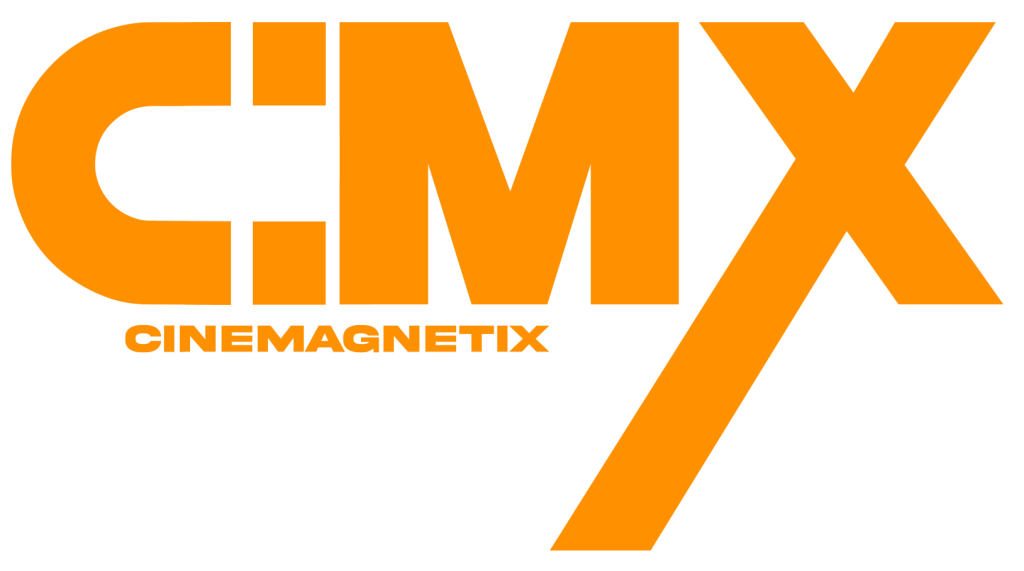What You Need to Know About Website Optimization: Lessons from the Best |

Sign Up for Our Free Weekly Newsletter
We’ll be in your inbox once a week with top business news, inspiring stories, best advice and exclusive reporting from Cinemagnetix – (CmX).
What You Need to Know About Website Optimization: Lessons from the Best
We are happy to help you learn more about website optimization, which is the process of improving your website’s performance, user experience, and search engine ranking.
Website optimization is important because it can help you:
- Attract more visitors to your website by making it easy to find and relevant to their needs
- Convert more visitors into customers by providing them with a fast, engaging, and satisfying experience
- Retain more customers by building trust and loyalty with your brand
- Achieve your business goals and grow your revenue
In this blog post, we will teach you some of the best practices and tools for website optimization, and show you some real examples and case studies of success. We will also provide you with some links to useful resources and videos that you can check out for more information.
Let’s get started!
Conversion Rate Optimization (CRO)

Conversion rate optimization (CRO) is the practice of increasing the percentage of visitors who take a desired action on your website, such as signing up for a newsletter, downloading a free trial, or making a purchase.
CRO is essential for website optimization because it helps you make the most of your traffic and generate more value from your existing audience. CRO can also help you lower your customer acquisition costs, increase your customer lifetime value, and improve your return on investment (ROI).
To optimize your conversion rate, you need to understand your visitors’ behavior, preferences, and pain points. You also need to test different elements of your website, such as headlines, images, copy, layout, and design, to see what works best for your audience and your goals.
Some of the tools and methods that you can use for CRO are:
– A/B testing:
A/B testing is a technique where you compare two versions of a web page or a web element to see which one performs better. For example, you can test different headlines, colors, buttons, or calls to action to see which one generates more clicks, leads, or sales. You can use tools like Google Optimize, Optimizely, or VWO to run A/B tests on your website.
– Heatmaps:
Heatmaps are visual representations of how visitors interact with your website. They show you where visitors click, scroll, move their mouse, or tap on your web pages. Heatmaps can help you identify the most and least engaging areas of your website and optimize them accordingly. You can use tools like Hotjar, Crazy Egg, or Mouseflow to create heatmaps for your website.
– Surveys and feedback:
Surveys and feedback are ways to collect direct input from your visitors and customers. They can help you understand their needs, expectations, satisfaction, and frustrations with your website. You can use tools like Qualaroo, SurveyMonkey, or Typeform to create and distribute surveys and feedback forms on your website.
Here are some examples and case studies of how CRO can improve your website optimization:
– Gadget Flow:
Gadget Flow is a product discovery platform that showcases the latest tech and gear. They used Yieldify, a CRO platform, to increase their email subscribers by 300% and their conversions by 33%. They did this by creating personalized and targeted pop-ups, banners, and overlays that offered incentives and value propositions to their visitors. For example, they offered a 10% discount coupon for first-time buyers, a free ebook for newsletter sign-ups, and a countdown timer for limited-time offers.
– Backlinko:
Backlinko is a popular SEO blog and training platform. They used Gotch SEO, a CRO agency, to create a squeeze page that converts at 74.5%. A squeeze page is a landing page that has one goal: to capture the visitor’s email address. They did this by following a 9-step approach that included: writing a compelling headline, using social proof, offering a lead magnet, adding a clear call to action, and more.
– Windows Report:
Windows Report is a website that provides news, tips, and reviews for Windows users. They used Ahrefs, an SEO tool, to increase their organic traffic by 500% in 12 months. They did this by analyzing their competitors, finding low-competition keywords, creating high-quality content, and building backlinks. As a result, they also increased their conversions by 332% and their revenue by 392%.
Do you know that the average conversion rate across all industries is 2.35%, but the top 25% of websites convert at 5.31% or higher? This means that there is a lot of room for improvement for most websites, and CRO can help you achieve that.
Page Speed Optimization

Page speed optimization is the practice of improving your website’s loading time and performance. Page speed is important for website optimization because it affects both your user experience and your search engine ranking.
Page speed affects your user experience because it influences how visitors perceive and interact with your website. A fast-loading website can create a positive impression, increase engagement, and reduce bounce rate. A slow-loading website can create a negative impression, decrease engagement, and increase bounce rate.
Page speed affects your search engine ranking because it is one of the factors that Google and other search engines use to evaluate and rank your website. A fast-loading website can improve your visibility, relevance, and authority. A slow-loading website can hurt your visibility, relevance, and authority.
To optimize your page speed, you need to measure your website’s loading time and performance, and identify and fix the issues that are slowing it down. You also need to implement best practices and techniques that can enhance your website’s speed and performance.
Some of the tools and methods that you can use for page speed optimization are:
– PageSpeed Insights:
PageSpeed Insights is a free tool from Google that analyzes your website’s speed and performance on both desktop and mobile devices. It gives you a score out of 100 and provides suggestions on how to make your website faster and better. You can use PageSpeed Insights to measure and improve your website’s speed and performance.
– Pingdom:
Pingdom is a website monitoring and performance testing tool that helps you measure and optimize your website’s speed and performance. It lets you test your website’s loading time from different locations, devices, and browsers. It also gives you detailed reports and insights on your website’s speed, performance, and issues. You can use Pingdom to monitor and optimize your website’s speed and performance.
– WebPageTest:
WebPageTest is an online tool that allows you to test your website’s speed and performance using real browsers and real consumer connection speeds. It gives you a comprehensive analysis of your website’s loading time, performance, and optimization. It also gives you recommendations and best practices on how to improve your website’s speed and performance. You can use WebPageTest to test and optimize your website’s speed and performance.
Here are some examples and case studies of how page speed optimization can improve your website optimization:
– Walmart:
Walmart is one of the largest retailers in the world. They used Pingdom to measure and improve their website’s speed and performance. They found that for every one second of improvement in their website’s loading time, they saw a 2% increase in conversions. They also found that for every 100 milliseconds of improvement, they saw a 1% increase in revenue.
– Pinterest:
Pinterest is a social media platform that allows users to discover and save ideas for various projects and interests. They used Google PageSpeed Insights to measure and improve their website’s speed and performance. They found that by reducing their website’s loading time by 40%, they saw a 15% increase in organic traffic and a 15% increase in sign-ups.
– The Trainline:
The Trainline is a leading online platform for train travel in Europe. They used WebPageTest to measure and improve their website’s speed and performance. They found that by reducing their website’s loading time by 0.3 seconds, they saw a 8.1% increase in revenue.
Do you know that 53% of mobile users abandon a website that takes longer than 3 seconds to load, and that a one-second delay in page load time can result in a 7% reduction in conversions? This means that page speed optimization is crucial for your website’s success, and can have a significant impact on your bottom line.
User Experience (UX) Optimization

User experience (UX) optimization is the practice of improving your website’s usability, accessibility, and desirability for your visitors and customers. UX is important for website optimization because it affects how visitors and customers feel about and interact with your website.
UX affects your website optimization because it influences your visitors’ and customers’ satisfaction, loyalty, and advocacy. A good UX can create a positive emotional connection, increase retention, and encourage referrals. A bad UX can create a negative emotional connection, decrease retention, and discourage referrals.
To optimize your UX, you need to understand your visitors’ and customers’ needs, expectations, and preferences. You also need to design and build your website in a way that meets and exceeds those needs, expectations, and preferences.
Some of the tools and methods that you can use for UX optimization are:
– UXPressia:
UXPressia is a UX design and collaboration tool that helps you create and share user personas, customer journey maps, and impact maps. User personas are fictional representations of your ideal customers that help you understand their goals, motivations, and pain points. Customer journey maps are visualizations of your customers’ interactions with your website across different stages and touchpoints. Impact maps are strategic tools that help you align your website’s features and goals with your customers’ needs and expectations. You can use UXPressia to create and share user personas, customer journey maps, and impact maps for your website.
– Figma:
Figma is a UX design and prototyping tool that helps you create and test interactive mockups of your website. Mockups are visual representations of how your website will look and function before you actually build it. Prototypes are mockups that simulate the user interface and user interaction of your website. You can use Figma to create and test mockups and prototypes of your website.
– UserTesting:
UserTesting is a UX testing and research tool that helps you collect and analyze feedback from real users of your website. Feedback is the information and opinions that users provide about your website’s usability, accessibility, and desirability. You can use UserTesting to conduct various types of user tests, such as usability tests, preference tests, and card sorting tests, and get video recordings, written reports, and analytics of your users’ behavior and feedback.
Here are some examples and case studies of how UX optimization can improve your website optimization:
– Airbnb:
Airbnb is a online marketplace that connects travelers with local hosts who offer unique accommodations and experiences. They used UserTesting to improve their website’s UX and increase their bookings by 10%. They did this by testing different versions of their website with real users and collecting feedback on their navigation, search, and booking processes. They also used Figma to create and test prototypes of their website’s new features and design.
– Slack:
Slack is a cloud-based collaboration platform that allows teams to communicate and work together more efficiently. They used UXPressia to create and share user personas and customer journey maps for their website. They did this by conducting user interviews and surveys to understand their users’ goals, motivations, and pain points. They also used Figma to create and test mockups and prototypes of their website’s new features and design.
– Netflix:
Netflix is a streaming service that offers a wide variety of TV shows, movies, documentaries, and more. They used A/B testing to improve their website’s UX and increase their sign-ups by 33%. They did this by testing different versions of their website’s landing page with different images, headlines, and copy. They found that the version that showed personalized recommendations based on the user’s preferences and browsing history performed the best.
Do you know that 88% of online consumers are less likely to return to a website after a bad user experience, and that 75% of users judge a website’s credibility based on its design? This means that UX optimization is vital for your website’s success, and can have a significant impact on your reputation and trust.
Search Engine Optimization (SEO)

Search engine optimization (SEO) is the practice of improving your website’s visibility, relevance, and authority for search engines and users. SEO is important for website optimization because it affects how your website is found and ranked by search engines and users.
SEO affects your website optimization because it influences your website’s traffic, leads, and conversions. A well-optimized website can attract more organic traffic, generate more qualified leads, and convert more customers. A poorly-optimized website can lose traffic, leads, and conversions to your competitors.
To optimize your SEO, you need to follow the best practices and guidelines of search engines, especially Google, which is the most popular and widely used search engine in the world. You also need to create and optimize your website’s content, structure, and technical aspects to match the search intent and expectations of your users.
Some of the tools and methods that you can use for SEO are:
– Google Search Console:
Google Search Console is a free tool from Google that helps you monitor and improve your website’s performance and health on Google Search. It gives you reports and insights on your website’s search traffic, impressions, clicks, rankings, keywords, and issues. It also gives you tools and features to submit and update your website’s sitemap, fix crawl errors, request indexing, and more. You can use Google Search Console to measure and improve your website’s SEO.
– SEMrush:
SEMrush is a SEO and marketing tool that helps you analyze and optimize your website’s SEO, content, social media, and advertising. It lets you conduct keyword research, competitor analysis, site audit, backlink analysis, and more. It also gives you reports and insights on your website’s SEO, content, social media, and advertising performance and opportunities. You can use SEMrush to optimize your website’s SEO, content, social media, and advertising.
– Yoast SEO:
Yoast SEO is a WordPress plugin that helps you optimize your website’s SEO, content, and readability. It gives you features and suggestions to improve your website’s title, meta description, URL, headings, keywords, images, links, and more. It also gives you features and suggestions to improve your website’s readability, structure, and tone. You can use Yoast SEO to optimize your website’s SEO, content, and readability.
Here are some examples and case studies of how SEO can improve your website optimization:
– HubSpot:
HubSpot is a software company that provides tools and resources for inbound marketing, sales, and customer service. They used SEMrush to improve their website’s SEO and increase their organic traffic by 39%. They did this by conducting keyword research, competitor analysis, site audit, and backlink analysis. They also used Yoast SEO to optimize their website’s title, meta description, URL, headings, keywords, images, links, and more.
– Shopify:
Shopify is a e-commerce platform that allows anyone to create and run an online store. They used Google Search Console to improve their website’s SEO and increase their impressions by 94%. They did this by monitoring and fixing their website’s crawl errors, indexing issues, and mobile usability issues. They also used Google Search Console to submit and update their website’s sitemap, request indexing, and more.
– Moz:
Moz is a SEO software and education company that offers tools and resources for SEO, content, and local marketing. They used A/B testing to improve their website’s SEO and increase their conversions by 52%. They did this by testing different versions of their website’s landing page with different headlines, copy, and images. They found that the version that emphasized the benefits and value proposition of their product performed the best.
Do you know that 93% of online experiences begin with a search engine, and that 75% of users never scroll past the first page of search results? This means that SEO optimization is crucial for your website’s success and can have a significant impact on your visibility and reach.
Conclusion
In this blogpost, we have taught you some of the best practices and tools for website optimization, and showed you some real examples and case studies of success. We hope you have learned a lot and enjoyed this blogpost.
Website optimization is a continuous and dynamic process that requires constant monitoring, testing, and improvement. You should always keep an eye on your website’s performance, user experience, and search engine ranking, and look for ways to enhance them.
If you want to learn more about website optimization, here are some useful resources and videos that you can check out:
– Website Optimization: An Hour a Day: A book that guides you through a practical and comprehensive approach to website optimization, covering topics such as conversion rate optimization, page speed optimization, user experience optimization, and search engine optimization.
– How to Optimize Your Website in 2024: A video that explains the latest trends and best practices for website optimization in 2024, covering topics such as mobile-first design, voice search, artificial intelligence, and more.
– Website Optimization 101: The Ultimate Guide for 2024: A blog post that provides a comprehensive and updated guide for website optimization in 2024, covering topics such as conversion rate optimization, page speed optimization, user experience optimization, and search engine optimization.
Thank you for choosing Cinemagnetix – CmX as your digital companion. We hope you have a great day!
Subscribe To Our Newsletter
Get updates and learn from the best
Artificial intelligence (AI) is no longer a futuristic concept; it’s revolutionizing how businesses operate today. From automating mundane tasks to personalizing customer experiences, AI offers a multitude of benefits for streamlining operations and boosting efficiency. This blog post will explore specific ways AI is impacting businesses in 2024, exploring its applications, benefits, and challenges with a focus on recent research findings and statistics.
In this blog post, we explored the balance between AI advancements and the authenticity of amateur content creation. While AI offers incredible tools for creators, it’s essential to maintain the human touch that makes content truly special. Let’s embrace AI as a challenge to innovate and enhance our creativity, ensuring that genuine voices continue to thrive in the digital landscape.
This blog post provides a comprehensive overview of the future impact of renewable energy on small businesses, offering valuable insights and practical information to help small business owners navigate this transformative trend.
Content creation is a cornerstone of digital marketing, playing a crucial role in attracting, engaging, and retaining customers. By understanding best practices and learning from successful case studies, marketers can significantly enhance their content strategies. This blog post will explore effective content creation strategies and highlight some inspiring success stories.
By leveraging these tools, you can streamline your marketing efforts, gain valuable insights, and ultimately drive better results for your business. Whether you’re focusing on SEO, content marketing, social media, or any other aspect of digital marketing, having the right tools at your disposal is crucial for success.
While lead generation is a crucial first step, relying solely on a platform like Smartleads.ai might leave your sales funnel feeling more like a graveyard than a thriving pipeline. In today’s competitive landscape, effective sales outreach requires a multi-faceted approach. In this post, we’ll unveil the limitations of Smartleads.ai (based on available information) and illuminate the path to success with a range of compelling alternatives. We’ll explore features, functionalities, user insights, and real-world success stories to help you find the perfect platform to resurrect your sales outreach efforts and unleash explosive growth. So, grab your metaphorical flashlight, and let’s explore the exciting world of alternative sales outreach solutions!
The art of the cold email remains a cornerstone of B2B outreach. In today’s digital age, however, simply crafting a compelling email and hitting send is no longer enough. With overflowing inboxes and increasingly sophisticated spam filters, the need for a strategic and automated approach has become paramount. This is where cold email software steps in.
This post dives deep into three leading contenders: Smartlead, Instantly, and Salesforge. We’ll explore their strengths, weaknesses, pricing, and ideal user profiles to help you choose the champion for your cold email crusade.
We’ll explore in depth the top marketing tool categories, exploring the strengths and weaknesses of industry leaders. This breakdown will empower you to make informed decisions and build a customized marketing arsenal that aligns with your specific goals and budget.











